Botox Brow Lift: Enhancing Your Appearance Without Surgery
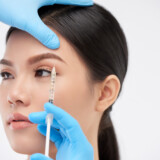
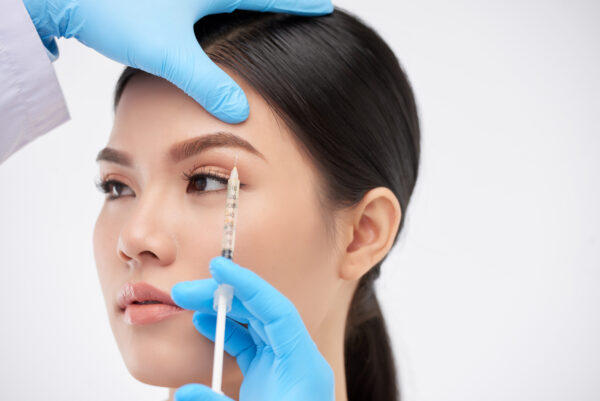
Since its FDA approval, the Botox brow lift has become a popular non-surgical cosmetic procedure for facial wrinkles.
The Botox brow lift, a non-surgical cosmetic procedure utilizing botulinum toxin A, has gained popularity as an FDA-approved method for diminishing facial fine lines and wrinkles. Offering a natural and subtle transformation without resorting to invasive surgery, this procedure focuses on relaxing specific facial muscles to achieve a lifted look around the eyebrows. In this article, we explore the details of the Botox brow lift, from the procedure itself to aftercare tips and potential complications.
The Botox Brow Lift Procedure
The Botox brow lift involves injecting botulinum toxin-A, commonly known as Botox, at three key locations: the frown area, forehead, and outer edge of the eyebrows. By relaxing the muscles in these areas, the procedure aims to create a subtle lift to the eyebrows, addressing both fine lines and deeper-set wrinkles caused by aging, UV radiation exposure, genetics, and repetitive facial expressions.
Procedure Steps:
- Aesthetic Consultation: Consultation with a medical professional involves marking asymmetries and assessing concerns such as uneven brow height or eye aperture. FDA approval for treating dynamic wrinkles through Botox requires before-and-after photographs for comparison.
- Preparation: Patients are advised to discontinue anticoagulant medication or dietary supplements two weeks before treatment to minimize bruising. Consultation with a medical professional before discontinuing any medication is crucial.
- Botulinum Toxin Injection: The medical professional identifies frown muscles and administers Botox injections at five sites, including areas between the brows, horizontal forehead lines, and muscles around the crow’s feet. The mild stinging sensation typically fades after a few minutes.
- Results and Follow-Up: Initial results appear after three days, with the full effect visible within two weeks. Repeating the treatment before facial lines fully reappear is recommended, extending the effects for 3–4 months.
Effects on Facial Appearance
Following a Botox brow lift, reports suggest elevated brow positions and increased interbrow distance. The treated skin appears rejuvenated and youthful. The dynamics of the frown muscle can be altered based on the type, amount, and exact location of Botox placement. Precise consideration of brow position and shape is crucial to avoid unintended changes to the patient’s appearance.
Worth and Considerations
While the cost of the Botox brow lift can vary, its effectiveness in addressing dynamic wrinkles makes it a popular choice. Not covered by medical insurance, the cost can be a significant factor. Complications, such as brow ptosis and facial asymmetry, may arise if not performed by a medical professional.
Botox Brow Lift Aftercare
Post-treatment care is vital for optimal results and minimizing risks. Key guidelines include keeping the head upright for four hours post-injection, avoiding heat, pressure, or massage to the treated area for 24 hours, and exercising treated muscles within the first hour to evenly spread the toxin. Physical exercise should be avoided for three hours post-treatment to reduce bruising risks, and pain medications can be taken for mild headaches.
Duration and Prolonging Effects
The time for results to manifest and the duration of the effect depends on factors such as toxin type and dose, target muscle, and patient age and sex. Wrinkles and fine lines typically start disappearing within five days, with the full effect visible after two weeks. Repeated treatments, good skincare, hydration, UV protection, and a healthy lifestyle can prolong the effects from six months to a year.
Risks and Complications
Complications that may arise from Botox treatment encompass a range of issues, including flu-like symptoms, headaches, nausea, bruising, pain at the injection site, and temporary facial weakness or drooping. In rare instances, more severe symptoms such as breathing problems, difficulty swallowing, slurred speech, and muscle weakness can occur. However, it is essential to note that these complications are infrequent when Botox injections are administered by qualified medical professionals.
Dentox stands out as a comprehensive training program tailored for both medical and aesthetic professionals. The program equips medical professionals with the skills to administer Botox in a manner that prioritizes safety and effectiveness while minimizing product wastage. Whether aiming to enhance patient care or expand business capabilities, Dentox offers a valuable resource to achieve both objectives successfully.
Dr. Howard Katz is widely recognized as a leading authority on injectable education, and Dentox serves as a testament to his expertise. The program provides a versatile learning experience, offering both traditional classroom instruction and online, on-demand access to course materials. Botox training, facilitated by Dr. Katz, is available through online courses at https://dentox.com/all-courses/botox-training/ and in-person sessions with real patients at https://dentox.com/live-courses/. These avenues empower medical professionals to gain proficiency in administering Botox injections with confidence and precision.
Key Takeaways
- The Botox brow lift is a non-surgical treatment using botulinum toxin-A to relax muscles, reducing wrinkles.
- The procedure involves consultation, preparation, injection, aftercare, and follow-ups for optimal care and longevity.
- Results offer a subtle and natural brow shape, smoothing forehead lines and the area between the brows.
- Costs vary depending on factors like dosage, injection points, and practitioner expertise.
- Aftercare includes avoiding rubbing the treated area, maintaining hydration, using gentle skincare, sun protection, and a healthy lifestyle.
- Risks encompass mild side effects like headaches, redness, bruising, nausea, and temporary facial weakness.
In conclusion, the Botox brow lift presents an appealing alternative for those seeking facial rejuvenation without surgery, with careful consideration of its benefits, costs, and potential risks.
Dermal Fillers and Their Transformative Role in Minimizing Acne Scars

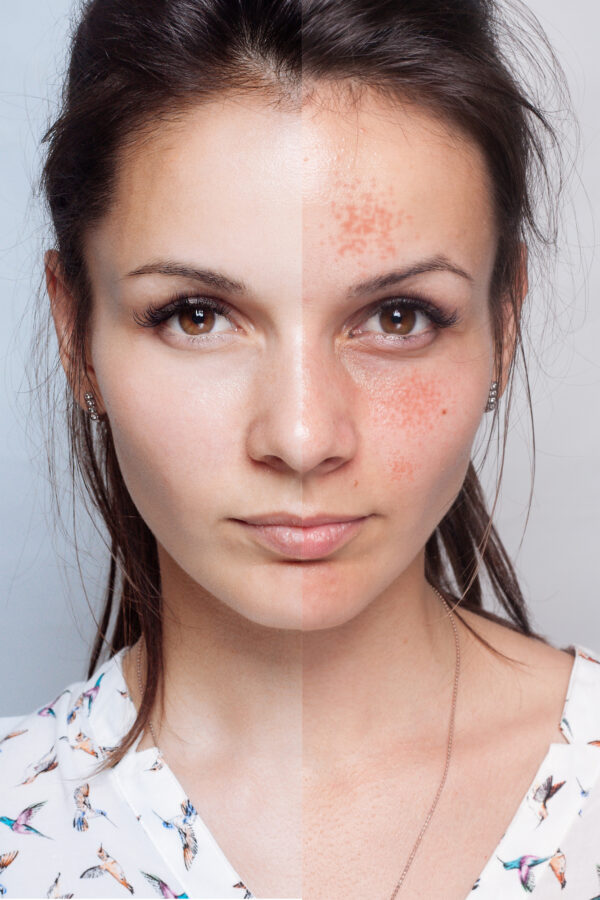
For those who suffer from acne scars, dermal fillers have just emerged as a potentially life-changing treatment option.
The continuum of acne management goes beyond the initial problem of cutaneous flaws because lingering scars remain a major worry. In the pursuit of a holistic remedy, dermal fillers emerge as a sophisticated therapeutic intervention, exhibiting the potential to ameliorate acne scars and enhance overall facial aesthetics. This discourse delves into the realm of dermal fillers, elucidating their efficacy in mitigating acne scars and bestowing a renewed luminosity upon individuals.
Comprehending Dermal Fillers for Acne Scars
Dermal fillers, acknowledged as soft-tissue augmentation agents, comprise gel-like formulations meticulously injected into regions impacted by acne scars. These fillers boast a composition blending biocompatible natural and synthetic materials, ensuring their cutaneous safety. Beyond their immediate impact on skin texture, dermal fillers play a pivotal role in eliciting collagen production and imparting volume. This dual modality effectively counteracts the deleterious effects of inflammatory acne, particularly addressing atrophic or depressed scars.
The Therapeutic Procedure
Embarking on the path of dermal filler intervention necessitates a comprehensive consultation with a dermatologist. This critical step involves evaluating the individual’s cutaneous profile and discerning the most suitable type and quantity of fillers. The procedural sequence encompasses:
- Patch Test: Conducted to preempt allergies, a small amount of filler is injected into the arm, with subsequent monitoring for any adverse reactions.
- Marking: The dermatologist strategically marks facial areas earmarked for filler injection, ensuring precision during the therapeutic procedure.
- Local Anesthesia: Administered to minimize discomfort, local anesthesia precedes the commencement of the injection process.
- Injection: Employing a fine needle, the dermatologist meticulously administers the filler beneath the skin in the targeted areas, addressing acne scars.
- Multiple Injections: The process iterates as necessary, covering diverse facial regions impacted by acne scars.
The entire therapeutic procedure typically spans a duration of 15 to 30 minutes, culminating in the application of an ice pack to alleviate swelling. Immediate outcomes may be observable in certain instances, with a restoration of cutaneous volume in areas previously afflicted by profound scars.
Monetary Considerations
The financial outlay for dermal fillers designed for acne scars varies contingent on multiple factors, including filler composition, treated area dimensions, scarring severity, practitioner proficiency, and the geographic locale of the clinic. Individuals must take these factors into account when assessing the economic aspects of the therapeutic procedure.
Potential Risks and Adverse Effects
While dermal fillers are generally regarded as safe, potential risks and adverse effects necessitate consideration:
- Edema, Ecchymosis, and Erythema: Ubiquitous and typically transient, these effects tend to resolve autonomously.
- Hypersensitivity Reaction: Infrequent, particularly with fillers derived from bovine sources; allergy tests are routinely conducted to mitigate this risk.
- Hemorrhage: An incorrect injection may precipitate bleeding at the injection site.
- Vascular Compromise: An accidental injection into a blood vessel can lead to permanent cutaneous damage, underscoring the importance of adept practitioners.
- Facial Asymmetry: Novice practitioners may induce inappropriate filler placement, resulting in an uneven facial appearance.
- Nodule Formation: Fillers may incite an inflammatory response, generating nodules at the injection site. A comprehensive pre-treatment evaluation can help mitigate this risk.
- Filler Displacement: Fillers may migrate beneath the skin, resulting in an uneven appearance. Proficient injection techniques and expertise can minimize this risk.
Dentox Training Program
The Dentox training program is strongly recommended for medical professionals administering dermal fillers to address these potential risks and optimise patient outcomes. This program equips professionals with extensive knowledge and skills, emphasizing the mitigation of patient discomfort and expediting the recovery process during filler administrations.
Learn more about dermal fillers online at https://dentox.com/all-courses/dermal-fillers/. Participation in this program helps medical professionals keep up with the newest developments in their professions and become experts in such fields. Anyone interested in participating in live classes to interact with actual patients can do so at https://dentox.com/live-courses/.
In Conclusion
Dermal fillers emerge as a promising and transformative therapeutic solution for individuals contending with acne scars. Beyond the immediate enhancement in cutaneous texture, these fillers stimulate collagen production and reinstate volume, providing a multifaceted approach to scar reduction. When contemplating dermal fillers, individuals should evaluate potential risks, select experienced practitioners, and explore training programs like Dentox to ensure secure, efficacious, and resplendent outcomes. The journey to diminish acne scars metamorphoses into a personal and transformative experience, unlocking newfound confidence and revitalizing cutaneous luminosity.
Elevate Your Profile: The Comprehensive Guide to Non-Surgical Chin Augmentation
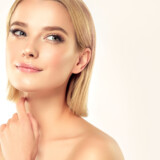

Non-surgical chin augmentation with dermal fillers is a transformational and accessible face enhancement option.
Are you on a quest to enhance your facial features but hesitant to undergo traditional cosmetic surgery? If so, consider the transformative potential of non-surgical chin augmentation, a safe and effective solution for achieving a more harmonious facial profile.
In this in-depth exploration, we delve into the realm of non-surgical chin augmentation, focusing on the use of dermal fillers to redefine and contour the chin area. By the end of this guide, you’ll understand the procedure thoroughly, from what to expect during and after to determining whether this innovative treatment aligns with your aesthetic goals.
Understanding Dermal Fillers: A Gateway to Facial Transformation
At the heart of non-surgical chin augmentation lies dermal fillers, injectable substances designed to restore volume, contour, and shape to specific facial areas. Hyaluronic acid (HA), a naturally occurring substance in the body that maintains skin hydration and plumpness, is among the most widely used fillers for chin augmentation.
The Art of Non-Surgical Chin Augmentation: How Dermal Fillers Reshape Your Profile
Non-surgical chin augmentation stands as a revolutionary method for enhancing chin shape and projection without the need for invasive surgery. By strategically injecting fillers into targeted areas, such as the chin tip or along the jawline, this procedure adds volume and structure to address a weak chin, resulting in a more defined and balanced facial profile. The entire process, lasting between 30 minutes and an hour, boasts the advantage of requiring no downtime, allowing individuals to resume their daily activities swiftly.
Navigating the Procedure: What to Expect During and After
Before embarking on your non-surgical chin augmentation journey, a thorough consultation with a medical professional is paramount. This session serves to align your goals and expectations with a careful assessment of your chin’s current shape and structure, guiding the determination of the optimal filler quantity.
Following this, the injection sites are meticulously marked, and a numbing cream is applied to ensure minimal discomfort during the procedure. Post-injections, a gentle massage ensures even filler distribution. While mild swelling, redness, or bruising may manifest initially, these temporary effects typically subside within a few days.
Witnessing an immediate improvement in chin definition and balance post-treatment, the subsequent weeks bring further enhancements as the filler settles into its final form. With minimal risks and no downtime, individuals can relish the benefits of a more sculpted chin without disrupting their daily routines.
Am I a Suitable Candidate for Non-Surgical Chin Augmentation?
Ideal candidates for non-surgical chin augmentation include those seeking a more defined chin, wishing to correct asymmetry, and desiring a non-invasive alternative to traditional surgical methods. Realistic expectations and good overall health, free from conditions contraindicating dermal filler use, are prerequisites for potential candidates.
Choosing Between Fillers and Implants: A Decision Guide
Comparing non-surgical chin augmentation with fillers to surgical options involving implants reveals key distinctions. While both aim to enhance chin shape and projection, surgical implants necessitate incisions and the placement of synthetic materials under the chin bone. In contrast, fillers offer volume and structure without incisions, significantly reducing recovery time and minimizing risks.
Ultimately, the choice between fillers and implants hinges on individual goals and preferences, with non-surgical options offering a scar-free, reversible, and immediately impactful solution.
The Advantages of Non-Surgical Chin Augmentation with Fillers
The appeal of non-surgical chin augmentation with fillers extends beyond its effectiveness. This method boasts minimal invasiveness, allowing individuals to enjoy transformative results with minimal risks and side effects. The procedure’s customizable nature ensures personalized adjustments, delivering the desired enhancement level. Immediate results and ongoing improvements as collagen production is stimulated over time provide a holistic and lasting transformation. Moreover, the scar-free outcome and the reversible nature of hyaluronic acid fillers add an extra layer of assurance, allowing for adjustments in the rare event of dissatisfaction or complications.
Mastering the Art: Training for Dermal Filler Injections
For medical professionals seeking expertise in dermal filler injections, Dentox offers comprehensive courses. These programs equip professionals with the knowledge and skills necessary to excel in the field and stay abreast of the latest industry advancements. Live classes are available for those who wish to engage actively with actual patients during the learning process. To explore online and offline opportunities, please visit https://dentox.com/all-courses/dermal-fillers/ and https://dentox.com/live-courses/.
In conclusion, non-surgical chin augmentation with dermal fillers emerges as a transformative and accessible solution for those seeking facial enhancement without the commitment of traditional surgery. With its customizable and reversible nature, this procedure allows individuals to sculpt their ideal chin profile, elevating their overall facial aesthetic.
Exploring the Effectiveness of Botox for TMJ: A Comprehensive Guide


Many people have turned to Botox, which is well-known for its wrinkle-reducing effects, as a way to alleviate the pain and discomfort caused by TMJ issues.
For those grappling with jaw pain and disruptive clicking sounds due to TMJ disorders, the limited treatment options available can be disheartening. In recent years, Botox has emerged as a potential remedy for TMJ pain, with professionals successfully utilizing it for over fifteen years to treat TMJ, facial pain, and clenching/grinding. This post delves into the effectiveness of Botox in addressing TMJ issues, providing answers to key questions surrounding its application.
Understanding TMJ Disorders
TMJ disorders encompass a group of conditions affecting the temporomandibular joint (TMJ) and the surrounding muscles. The TMJ, a three-dimensional joint connecting the lower jawbone to the skull, facilitates various jaw movements. Symptoms of TMJ disorders include jaw pain, clicking or grating sounds, difficulty in mouth movement, headaches, earaches, facial pain, and neck pain. Causes range from teeth grinding, jaw injuries, and arthritis to stress, poor posture, and repetitive jaw movements.
How Botox Aids in TMJ Treatments
Known for its wrinkle-reducing properties, Botox has gained popularity as a solution for easing the pain and discomfort associated with TMJ disorders. Botox is injected into jaw muscles, which are responsible for clenching and grinding, to temporarily relax muscles. While Botox can be effective for TMJ, its suitability varies among individuals, emphasizing the importance of consulting a specialized professional for accurate diagnosis and treatment planning.
Combining Botox with Other TMJ Treatment Approaches
While Botox proves valuable, its effectiveness is often enhanced when combined with other TMJ treatment approaches. These may include self-care practices such as stress management and good posture, as well as physical therapy involving exercises to strengthen and improve jaw function.
Benefits of Botox for TMJ
Botox injections offer several benefits for individuals dealing with TMJ pain and discomfort:
- Reduced Pain and Tension: Botox temporarily relaxes muscles, significantly decreasing jaw clenching, grinding, and associated aches and headaches.
- Improved Jaw Mobility: Relaxed muscles contribute to smoother jaw movement, facilitating easier mouth opening and reducing clicking or popping sounds.
- Headache Relief: Botox effectively diminishes tension-related headaches associated with TMJ by easing muscle tension.
- Minimal Disruption: The quick and minimally invasive injection procedure results in little downtime, with effects lasting 3-6 months for sustained relief.
- Non-Invasive Alternative: Botox serves as a non-invasive alternative for those who may not have found success with traditional TMJ treatments.
Considerations on Cost and Insurance
The cost of Botox for TMJ treatment can vary based on the provider’s experience and expertise. Board-certified specialists with extensive TMJ treatment knowledge may charge more than general practitioners. Insurance coverage for Botox injections for TMJ is often limited, requiring pre-authorization and a letter of medical necessity. Some specialized insurance plans focusing on chronic pain management may offer coverage, emphasizing the need to review individual plans and inquire with insurance providers.
Risks Associated with Botox Treatments for TMJ
While generally safe, Botox treatments for TMJ carry some potential risks, including facial asymmetry due to muscle relaxation, pain or bruising at the injection site, and temporary flu-like symptoms post-treatment. Consulting a highly qualified professional with experience in TMJ treatments is crucial to carefully weigh potential benefits and risks before deciding on Botox for TMJ.
Conclusion
In conclusion, Botox presents a promising avenue for individuals seeking relief from TMJ-related issues. Its ability to reduce pain, improve jaw mobility, and offer a non-invasive alternative makes it an attractive option. However, consulting a qualified medical professional, considering individual needs, and understanding potential risks are essential steps in determining the suitability of Botox for TMJ treatment.
Dentox offers comprehensive training on administering Botox injections in the chin and jaw areas, ensuring that practitioners can deliver optimal results for their patients. This enhanced skill set may contribute to increased patient satisfaction and the likelihood of them seeking further aesthetic treatments. Dr. Howard Katz, renowned as one of the country’s premier injectables instructors, provides the opportunity for students to engage in personalized training experiences either in person, online, or at their convenience.
By choosing Dentox, you gain access to high-quality education that empowers you to deliver exceptional care to your patients while boosting your business’s profitability. To explore upcoming in-person and online training programs focused on patient treatment, along with registration details, please visit https://dentox.com/live-courses/ and https://dentox.com/botox-training/.
Crafting a Successful Medspa Business: A Comprehensive Step-by-Step Guide
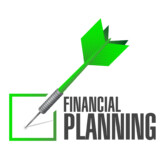

A Medspa business plan relies on financial planning, including startup expenses, finance sources, and break-even calculations.
A Medspa business plan is a crucial roadmap for entrepreneurs looking to establish a thriving venture in the rapidly growing beauty and wellness industry. This step-by-step tutorial breaks down the essential components required for a successful Medspa business plan, covering market research, services, marketing strategies, financial planning, and regulatory compliance.
The Rise of the Medspa Industry
Medspas, blending medical clinics with day spas, have gained significant popularity by offering aesthetic procedures and relaxation services. This tutorial emphasizes understanding market trends and consumer demands, highlighting the surge in non-surgical procedures, technological advancements, and the importance of personalized treatment plans. Demographic shifts, including middle-aged clients seeking anti-aging treatments and younger generations opting for preventative care, shape the Medspa landscape.
Defining Your Medspa Concept
Embarking on a Medspa venture requires a clear vision, emphasizing the importance of a Unique Value Proposition (UVP) to distinguish your business. Services and treatment selection, balancing popular options with unique offerings, are crucial to refining Medspa’s identity.
Creating a Solid Business Model
A robust business model is essential for a successful Medspa launch, involving identifying revenue streams, pricing strategies, and understanding cost structures. The tutorial delves into creating package memberships and calculating profit margins per service, ensuring sustainable growth.
Legal Considerations for Medspas
Comprehensive legal considerations, including licensing, certifications, and regulatory compliance, are imperative for Medspa’s legitimacy and the safety of its clients. The tutorial provides a step-by-step guide to obtaining the necessary licenses, understanding state-specific regulations, and implementing compliance measures.
Developing a Marketing Plan
A well-executed marketing plan is crucial for Medspa’s success, involving defining the target market, brand positioning, and utilizing both digital marketing and traditional advertising. Strategies include identifying client demographics, creating a unique selling proposition (USP), and engaging clients through online and offline platforms.
Operational Strategies for Success
Efficient operational strategies ensure Medspa not only survives but thrives. Staffing and training best practices focus on hiring certified professionals, continuous training, and fostering teamwork. Utilizing technology for appointment scheduling, CRM systems, and virtual consultations enhances customer service.
Financial Planning and Projections
Financial planning forms the backbone of a Medspa business plan, involving understanding startup costs and funding options and creating a break-even analysis. The tutorial emphasizes the importance of knowing your numbers and choosing funding options that align with your business model.
Launching Your Medspa
The process concludes with a pre-launch checklist, including finalizing services and pricing, recruiting skilled staff, ensuring compliance, and preparing marketing materials. Grand opening ideas and strategies, such as soft launches, partnering with local businesses, offering discounts, and engaging on social media, are highlighted to create a successful launch.
Conclusion
Creating a successful Medspa business plan requires a meticulous approach, considering market trends, legal requirements, operational efficiency, and financial planning. This requirement equips Medspa business players with the essential knowledge to transform their vision into a thriving venture in the competitive beauty and wellness sector.
Investing in high-quality Botox training programs is crucial for a successful cosmetics career. Enroll in Dentox’s comprehensive program today to gain expertise in the highly sought-after field of Botox under the guidance of industry specialists. Dedication lets you master using Botox to its maximum effectiveness, impressing every customer.
Dentox, led by Dr. Howard Katz, a leading expert in injectable training, offers a program equipping practitioners with the knowledge and skills to administer Botox injections expertly. With Dentox’s assistance, achieve business growth while improving client care. Dr. Katz provides both traditional classroom teaching and online instruction.
Dentox provides flexible Botox training options. Choose online training at https://dentox.com/all-courses/botox-training/ or in-person training at https://dentox.com/live-courses/ to suit your preferences.
A Comprehensive Look: Understanding the Impact of Dermal Injections on Skin Aging
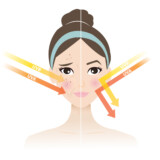

Photoaging occurs when UV light repeatedly hits human skin.
The relentless impact of ultraviolet (UV) light on human skin often results in premature aging, scientifically referred to as photoaging. In this process, the structural integrity of type I collagen bundles in the dermis is compromised, leading to the development of wrinkles, fragility, and a loss of support and elasticity. While consistent sunscreen use remains a primary preventive measure against UV-induced damage, a groundbreaking study detailed in Experimental Dermatology delves into the potential of dermal fillers, specifically cross-linked hyaluronic acid, to reverse the dermal changes associated with photoaging.
Understanding Photoaging and Collagen Fragmentation
Photoaging unfolds as chronic exposure to UV light causes the fragmentation of type I collagen bundles in the dermis. These collagen bundles, situated beneath the skin’s surface, play a pivotal role in providing strength and support to the skin. The resultant collagen breakdown manifests as wrinkles, increased skin fragility, and a diminished ability to maintain elasticity and support.
The Role of Sunscreen in Preventing Collagen Damage
Emphasizing that consistent sunscreen use is paramount in preventing damage to type I collagen induced by sunlight, wearing sunscreen, particularly when spending time outdoors, serves as a fundamental strategy to safeguard the skin against photoaging.
Dermal Fillers and Collagen Stimulation
The study unveils the remarkable impact of cross-linked hyaluronic acid, a popular dermal filler, on reversing the dermal changes associated with photoaging. Conventionally used to reduce lines and wrinkles by adding volume to the skin, these fillers, upon injection, go beyond surface-level improvements. Researchers have discovered that cross-linked hyaluronic acid stimulates the production of new type I collagen in the dermis.
Rapid and Long-lasting Improvement
Unlike traditional approaches that primarily focus on space-filling, cross-linked hyaluronic acid initiates rapid collagen production within weeks of injection. Notably, this collagen stimulation persists over an extended period, accumulating more collagen over the course of a year. The dual impact of immediate space-filling and sustained collagen production contributes to the short-term and long-term improvement of skin appearance.
Insights into Long-term Clinical Improvement
The two-sided character of cross-linked hyaluronic acid fillers has been the subject of significant research. While providing rapid improvement through space-filling, the stimulation of new dermal collagen offers a pathway to long-term clinical enhancement. The newly formed collagen, with a lifespan extending over several years, acts as a lasting foundation for sustained improvements, potentially reducing the necessity for frequent re-treatment.
Single Injection and Repeat Procedures
A single injection of cross-linked hyaluronic acid dermal filler can lead to both rapid and enduring improvement of the skin. Additionally, repeat injections may further augment collagen production, presenting the possibility of reducing the need for frequent re-treatment. This nuanced approach not only enhances the understanding of short-term and long-term clinical outcomes but also holds promise for refining treatment strategies.
Conclusion
As the quest for effective anti-aging interventions continues, cross-linked hyaluronic acid fillers provide a transformative perspective on combating photoaging. The unique ability of these fillers to stimulate collagen production, coupled with their space-filling properties, underscores their potential as a dual-action solution for both immediate and long-term skin improvements. It can be gained when they are injected by medical professionals.
To ensure the highest level of safety and effectiveness in dermal filler injections, it is recommended to seek the expertise of a certified medical professional. The paramount concerns for medical professionals should be the client’s health and the efficacy of the treatment. A skilled injector typically devises a personalized treatment plan to help maintain desired results, minimizing potential issues associated with dermal fillers. Opting for higher-quality choices can yield natural-looking results and instill a sense of security.
The Dentox training program is specifically crafted to aid medical professionals in reducing patient discomfort and expediting recovery during dermal filler administrations. For more information about Dentox, individuals are encouraged to consult further through the provided channels.
If you are in search of a reliable training program, you can explore https://dentox.com/all-courses/dermal-fillers/. Engaging in this program equips medical professionals with the necessary knowledge and skills to excel in their fields while also staying abreast of the latest industry advancements. Those interested in live classes can visit https://dentox.com/live-courses/ to actively engage with real patients during the learning process.
The Comprehensive Guide to Lip Fillers: A Journey to the Perfect Pout


Embarking on the journey to achieve fuller lips entails injecting a gel-like substance, typically hyaluronic acid, into the lips.
In the contemporary landscape of beauty standards, the allure of full, plump lips has surged, becoming a coveted trend. To attain the coveted perfect pout, a growing number of individuals are turning to lip fillers, a non-surgical cosmetic procedure also known as lip injections or dermal fillers. While these treatments have gained widespread popularity, it is crucial to gain a comprehensive understanding of lip fillers before diving into the aesthetic journey.
The Lip Filler Experience
Embarking on the path to fuller lips involves the injection of a gel-like substance, commonly hyaluronic acid, into the lips. Hyaluronic acid, a natural component found in the body responsible for maintaining skin hydration and volume, emerges as a safe and frequently employed filler for lip augmentation. Notably, one of the key advantages of lip fillers lies in their non-invasive nature. Unlike surgical procedures, lip injections necessitate minimal downtime, enabling individuals to resume their daily activities swiftly. Furthermore, the results are often subtle and can be finely adjusted to achieve the desired level of enhancement.
The Injection Process
The actual procedure of administering lip fillers is characterized by its efficiency and simplicity. Before the commencement of the treatment, a topical anesthetic is applied to minimize any potential discomfort. The filler, often hyaluronic acid, is then strategically injected into the lips. During this process, practitioners meticulously shape and sculpt, aiming to achieve a natural-looking result that harmonizes with the individual’s facial features. Most individuals undergoing this procedure report experiencing only mild discomfort, underscoring the relatively painless and expeditious nature of the process.
Possible Side Effects
As with any aesthetic procedure, lip fillers come with a set of potential side effects that individuals should be aware of. Common side effects include temporary swelling, bruising, and discomfort at the injection site. Additionally, asymmetry, or the development of lumps, may occur in some cases. However, it is important to note that these issues can often be addressed through additional treatments or adjustments. Recognizing and understanding these potential side effects emphasizes the need for thorough research and consultation with a board-certified dermatologist before deciding to undergo lip augmentation.
Informed Decision-Making
While lip fillers present an effective means to enhance lips and achieve a more youthful appearance, informed decision-making is paramount. Thorough research and consultation with a board-certified dermatologist ensure a nuanced exploration of the benefits and potential risks associated with the procedure. During a consultation, individuals can engage in a meaningful dialogue about the suitability of lip fillers for their unique circumstances, allowing for a personalized and informed decision.
Navigating the Educational Landscape
For medical professionals seeking comprehensive training in dermal fillers, a reliable resource is available at https://dentox.com/all-courses/dermal-fillers/. Dentox equips healthcare practitioners with the necessary knowledge and abilities to excel in their respective fields, all while staying updated on the latest industry advancements. Those seeking a hands-on learning experience can explore live classes at https://dentox.com/live-courses/, providing an opportunity to engage with actual patients under the guidance of experienced instructors.
Conclusion
The pursuit of enhanced lips through lip fillers goes beyond a mere aesthetic endeavor; it involves a thoughtful consideration of the procedure’s intricacies, potential side effects, and the importance of informed decision-making. In the dynamic landscape of beauty, understanding the nuances of lip augmentation becomes essential, ensuring that individuals can confidently embark on their journey towards fuller lips while prioritizing safety and well-informed choices.
The Aesthetic Odyssey: Unveiling a Spectrum of Possibilities with FDA-Approved Injectable Fillers


The realm of cosmetic procedures has undergone a substantial transformation with the introduction of injectable fillers approved by the FDA.
The realm of cosmetic procedures has witnessed a significant transformation with the advent of FDA-approved injectable fillers. Offering a diverse array of options, these fillers, classified by their unique compositions, have become integral tools for healthcare providers in the pursuit of aesthetic enhancements. This comprehensive exploration aims to shed light on various types of injectable fillers approved by the FDA, delineating their specific applications and benefits in the realm of cosmetic procedures.
- Hyaluronic Acid Fillers
Hyaluronic acid fillers, derived from a naturally occurring substance in the body, have emerged as versatile solutions in cosmetic procedures. Beyond mere plumping effects, these fillers provide hydration and find frequent application in procedures such as lip enhancement, cheek augmentation, and the reduction of wrinkles. Their natural compatibility with the body makes them a preferred choice for individuals seeking subtle yet effective enhancements.
- Calcium Hydroxylapatite Fillers
Stimulating collagen production, calcium hydroxylapatite fillers offer enduring results suitable for addressing prominent concerns like nasolabial folds, marionette lines, and hand rejuvenation. This innovative approach not only addresses existing wrinkles but also promotes long-term structural support, contributing to a more youthful and revitalized appearance.
- Poly-L-Lactic Acid Fillers
Operating by initiating a gradual and continuous stimulation of collagen production, Poly-L-Lactic Acid fillers stand out for their nuanced and progressive enhancements. This makes them an ideal choice for individuals addressing facial volume loss and deep wrinkles. Whether restoring facial volume or smoothing deep-set wrinkles, these fillers offer a sophisticated means of achieving a refreshed and harmonious aesthetic.
- Polymethyl Methacrylate Fillers
Containing microspheres for semi-permanent support, Polymethyl Methacrylate fillers are suitable for treating persistent concerns such as acne scars and deep wrinkles. This type of filler provides lasting structural support, offering individuals a reliable solution for long-term improvements.
- Autologous Fat Injections
Harnessing the body’s own resources, autologous fat injections utilize the patient’s harvested fat for volume restoration and facial contouring. This personalized approach ensures natural-looking results and has gained popularity as a holistic method of rejuvenation.
- Platelet-Rich Plasma Injections
Utilizing the patient’s blood plasma enriched with growth factors, platelet-rich plasma injections contribute to facial rejuvenation and address concerns like under-eye hollows. This innovative approach leverages the body’s natural healing properties for subtle and effective improvements.
- Polycaprolactone Fillers
Stimulating collagen production and providing immediate results, polycaprolactone fillers are commonly employed for wrinkle correction and facial contouring. Their dual-action approach ensures both immediate enhancements and long-lasting benefits.
- Cross-Linked Polymers
Offering longer-lasting outcomes compared to non-cross-linked fillers, cross-linked polymers are frequently used to restore volume in various facial areas. This type of filler provides a robust solution for individuals seeking enduring results.
Tailoring Treatment Plans and Ensuring Safety
The choice of filler depends on a multitude of factors, including the treatment area, desired outcomes, and individual patient characteristics. Consulting with a qualified healthcare professional is imperative to determine the most suitable filler for specific needs and goals. Certified specialists prioritize patient health and treatment efficacy, often developing personalized treatment plans to maintain desired results and minimize potential problems associated with dermal fillers.
Conclusion
Investing in higher-quality fillers not only leads to natural-looking outcomes but also provides a sense of security for patients. The expansive range of FDA-approved injectable fillers showcases the evolution of cosmetic procedures, offering individuals a spectrum of possibilities to achieve their aesthetic goals. As the field continues to advance, the collaboration between healthcare providers and patients remains pivotal for informed decision-making and the pursuit of safe and effective cosmetic enhancements.
The Dentox training program, led by Dr. Howard Katz, has been meticulously crafted to aid medical professionals in reducing patient discomfort and streamlining recovery time during dermal filler injections. To obtain more information about Dentox, individuals are encouraged to seek guidance from Dr. Howard Katz.
If you are in search of a reputable training program, you can explore https://dentox.com/all-courses/dermal-fillers/. Engaging in this program ensures that medical professionals not only gain comprehensive knowledge in their respective fields but also acquire the essential skills to excel while staying updated on the latest industry developments. For those keen on participating in live classes that provide an opportunity to interact with actual patients, a visit to https://dentox.com/live-courses/ is recommended.
The Food and Drug Administration Has Certified Botox for The Prevention of Migraines

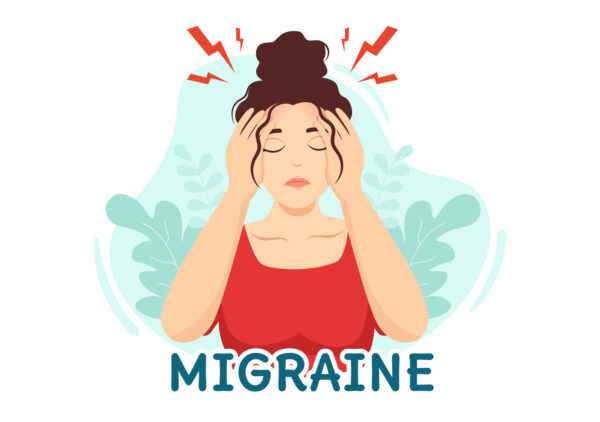
More than four hours of headaches per day for 15 days may indicate chronic migraines.
On Friday, federal health regulators approved Botox injections to prevent adults from experiencing chronic migraines. Experts characterized this development as “modest.”
To treat and prevent future headache symptoms, the Food and Drug Administration (FDA) recommended injecting Botox around the head and neck once every three months.
The treatment’s generic name, onabotulinumtoxin A, has not been proven helpful against migraines or any other kind of headache, even those that occur less frequently than 14 days per month.
According to the Division of Neurology Products within the Center for Drug Evaluation and Research of the Food and Drug Administration (FDA), chronic migraines are among the most debilitating forms of headache. Because this illness can significantly affect one’s personal, professional, and social lives, it’s crucial to have various effective treatment options.
Migraines, defined by intense throbbing or pulsating pain in one area of the head, often come with other symptoms, including nausea, vomiting, and sensitivity to light and sound, say medical experts. If your headaches continue longer than four hours daily and last fifteen days or longer, you might suffer from severe migraines.
The two trials the firm sponsored and submitted to the FDA drew 1,384 adults from 122 North American and European research sites. Six months after the trials began, individuals who had Botox reported 7.8 and 9.2 fewer migraine days, respectively, than those who had not had the injections. People with 6.4 fewer headache days and 6.9 fewer headache days overall were given sugar pill injections, respectively.
Those who took the medicine reported 107 and 134 shorter periods of headache pain during the six months of the trials, while those who received sugar pills reported 70 and 95 fewer hours of headache pain, respectively.
Migraine sufferers were each given 155 units by medical specialists via 31 injections into the neck and head muscles. Typically, the therapy was administered every three months.
An estimated 3.2 million Americans experience severe migraines regularly; nevertheless, a whopping 80% of those patients have never received a formal diagnosis.
Migraine is the sixteenth most disabling disease, according to the World Health Organization. The frequency of migraines, which are often linked to emotions of melancholy and anxiety, is three times higher in females than in males.
The use of Botox to treat the eye-muscle disorders strabismus and blepharospasm has been authorized for 21 years. Both disorders were approved for Botox, the same chemical entity.
Since then, authorities in around 80 countries have authorized the drug for 21 different uses, including the treatment of unnatural head position as well as neck pain in adults with cervical dystonia, symptoms of excessive perspiration under the arms, and increased stiffness in the muscles of the upper limbs (elbows, wrists, and fingers) in adults with spasticity. Symptomatic relief from excessive underarm sweating is another indicator.
Botox, when administered by a qualified expert, may alleviate migraines and other related symptoms. You should talk to a qualified medical professional before deciding to get Botox injections. Botox injections administered by medical professionals have the potential to enhance general health and lessen the severity of severe migraines. Dentox is a training program that aims to teach medical professionals how to safely and effectively inject Botox. If you want to learn how to administer Botox online, you can find training at https://dentox.com/all-courses/botox-training/. If you would also like to acquire experience dealing with actual patients, you may find live courses at https://dentox.com/live-courses/.
How to Find the Best Medical Spa for Your Needs: A Comprehensive Guide to Health and Beauty


Medical spas offer a variety of procedures, but two of the most popular treatments are Botox and dermal fillers.
Medical spas have exploded in popularity in a world where health and self-care are paramount. For individuals seeking rejuvenation and cosmetic treatments, these businesses provide a one-of-a-kind combination of medical knowledge and spa-like relaxation. There are so many medical spas that picking the best one can be challenging. Choosing the right medical spa to meet your needs can be daunting, but our guide is here to help you make a well-informed decision.
Getting to Know Medical Spas
Facilities that offer both medical treatments and the relaxing atmosphere of a spa are known as medical spas. Aestheticians, nurse practitioners, and doctors provide various medical and cosmetic services at these facilities.
Offering a greater variety of treatments than the average spa in a soothing and tranquil setting makes medical spas stand out. Botox and dermal fillers are two of the most popular treatments provided by medical spas.
Set Your Goals
Establishing what you hope to achieve is the initial stage in selecting an appropriate medical spa. Which particular treatments or enhancements are you hoping to achieve? Finding a medical spa that offers the necessary treatments can be challenging without first defining your goals.
Qualifications and Investigations
It is time to investigate possible medical spas after you fully grasp your goals. Find local spas by searching online and browsing customer reviews and feedback. Get the information from people you know who have been to medical spas and had great experiences there.
Think about these things when you evaluate a medical spa:
Credentials: Check that the medical spa employs only trained and certified personnel. Before you get treatment, be sure the doctors and nurses have the proper credentials.
Facility Accreditation: Find a medical spa accredited by reputable organizations. When a facility gets accreditation, it has proven it can meet or exceed all quality and safety requirements.
Consultation: Consult with the medical spa before deciding on any treatments. You can meet the staff here, tour the facility, and communicate any concerns or questions.
Why Medical Supervision Is Crucial
Having a medical professional on staff is a hallmark of medical spas. Treatments and procedures should only be carried out under the supervision of qualified medical experts. This control ensures the treatments are risk-free, productive, and personalized.
While you are seeing medical professionals for a consultation, feel free to ask any questions regarding their training and experience. Ensure they have a thorough grasp of the processes and are up-to-date on all the latest advancements in the industry.
Only trained medical professionals can administer the correct dose of Botox. They are well-versed in the best ways to administer it. Dentox is a course that teaches medical professionals how to inject Botox correctly.
Botox and filler injection training is now available to medical professionals. Live patient courses can be found at https://dentox.com/live-courses/, while online Botox training courses can be found at https://dentox.com/all-courses/botox-training/. Improving Botox and providing the greatest service to clients can be as simple as keeping up with the latest technology.
Technologies and Treatment Choices
Multiple treatment choices using cutting-edge equipment and procedures are hallmarks of a top-notch medical spa. Find out what tools and supplies they use and if they follow industry news for updates.
Cleanliness and Hygiene
To ensure your safety and satisfaction, a medical spa must adhere to strict sanitation standards. Things to remember while you are touring or consulting the facilities include:
Sterilization: Before each treatment, ensure that all instruments and equipment are adequately sterilized.
Cleanliness: The facilities must be hygienic and well-maintained. Your top priorities are the waiting area, treatment room, and restroom hygiene.
Guidelines for Safety: Discover more about the spa’s measures for preventing the spread of infection and other safety procedures. This includes practices such as properly disposing of medical waste, constantly washing hands, and using products with a single use.

Before choosing a treatment, it is recommended that you consult with the medical spa.
Customized Treatment Plans
Medical spa treatments should not be approached with a one-size-fits-all approach because each person has a unique skin type and condition. Find a medical spa that caters to clients by providing unique treatment plans. The medical professionals treating you should take the time to listen to your concerns and formulate unique strategies to meet your needs during the consultation.
Before and After Pics
Find out if the medical spa has before-and-after pictures of patients undergoing similar procedures. You can see the quality of work they put in and the outcomes they can achieve in these photos.
Transparency and Pricing
You can review the cost and several payment methods at the consultation. It is critical to be aware of how much your treatments will cost. Be wary of medical spas that provide treatments at drastically reduced rates compared to the market norm; this could indicate lower quality or inexperienced personnel.
Make sure the medical spa is forthright with you about the treatments, how long they will last, any potential side effects, and post-treatment care instructions.
Client Reviews and Testimonials
One way to learn about the medical spa’s quality of service is to read reviews written by previous clients. Look for evaluations on trustworthy websites like Google, Yelp, or the platform itself. Note any good or negative repeating topics that may appear in the reviews.
Treatment Aftercare and Follow-Up
Find out the treatment and follow-up appointment schedule for the medical spa. The most effective outcomes and minimal risk of side effects are achieved when the patient takes good care of themselves after treatment. Reputable medical spas not only provide follow-up consultations but also give post-procedure skin treatment recommendations.
Believe in your instincts
Finally, when deciding on a medical spa, go with your instincts. Feel free to leave and look into other possibilities if your consultation doesn’t fit with you or if you have worries about the facility’s hygiene, personnel, or procedures. For a successful experience, it is essential that you feel comfortable and confident in the medical spa.
Final Verdict
Opting for the perfect medical spa can profoundly affect your quest for well-being and beauty. By carefully reviewing the detailed instructions, you can make a decision that supports your goals and puts your happiness and safety first. On this path toward rejuvenation and self-care, don’t forget to do your homework, consult with experts, and listen to your instincts. Get the ultimate in treatments at the right medical spa.





